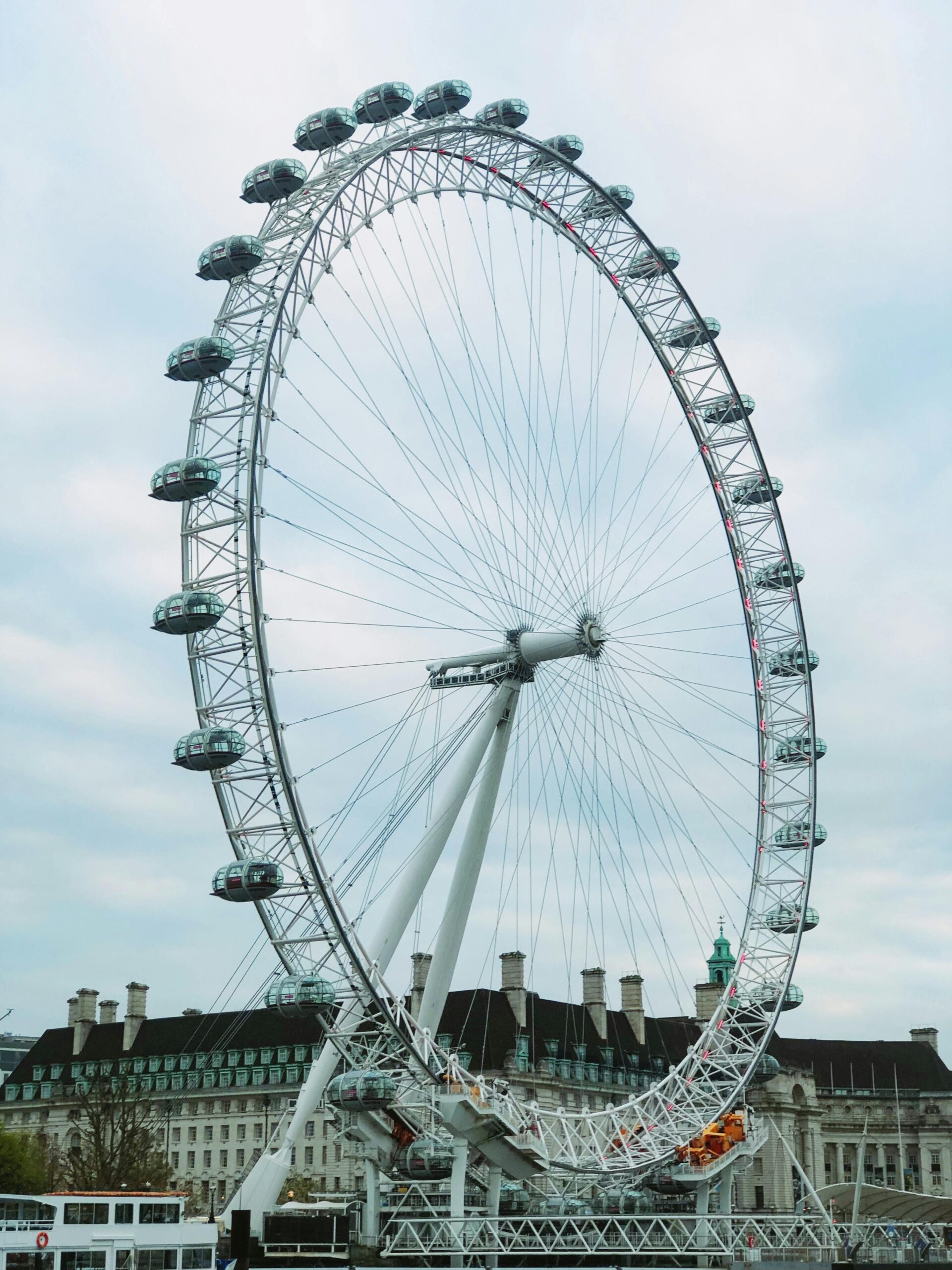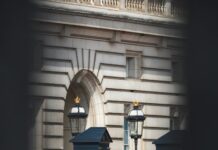London, the vibrant capital of the United Kingdom, is not just famous for its iconic landmarks like Big Ben and the Tower of London, but also for its unique zip code system that helps define its diverse neighbourhoods. Have you ever wondered how the London postcode system works? It’s a fascinating blend of history and modernity, where each area has its own distinct code that not only aids in navigation but also reflects the character of the community. With over 100 different postcodes in London, each one tells a story, from the bustling streets of Soho to the tranquil parks of Hampstead. As you delve into the world of London’s zip codes, you’ll discover how they influence everything from real estate prices to cultural trends. Learnt about the significance of these codes can aid both locals and visitors alike in understanding the city’s layout. Ever thought how important is the postcode in London for delivering mail, or even for online shopping? The intrigue surrounding London’s postcode system is vast and layered, making it a topic worth exploring for anyone interested in the UK’s capital.
Discover the Hidden Gems: How London’s Zip Codes Reveal the City’s Best-Kept Secrets
When we start talking about the zip code of London United Kingdom, it’s like opening a can of worms, isn’t it? I mean, what even is a zip code? In the UK, we call them postcodes, but whatever you wanna call it, they’re pretty important for mail, deliveries, or, like, finding your way around the city. I’m not really sure why this matters, but knowing your postcode could save you from a whole lot of confusion when you’re ordering a takeaway or trying to find your mate’s flat.
London’s postcode system is a bit complex and, honestly, it can make your head spin if you think about it too much. You got the area codes, the district codes, and then the unique part. It’s almost like a mini puzzle. For example, if you live in a posh area like Kensington, your postcode might look something like W8 5ZZ. Not to say that all W8 postcodes are posh, but you get the gist.
Here’s a quick breakdown of how these things work:
| Element | Description |
|---|---|
| Area Code | Represents the broader area (like W for West) |
| District Code | Specifies a district within the area (like 8) |
| Unique Code | Identifies a specific address or location (like 5ZZ) |
So, just to be clear, if you are wondering what a London UK postcode looks like, you’re gonna see a mix of letters and numbers. Sometimes it feels like a secret code or something, but it’s just the way they do things. Maybe it’s just me, but I feel like they could’ve made it simpler.
Now, if you’re ever in London and need to find someone, just whip out your smartphone and check Google Maps. You can type in the postcode, and voilà! You’re practically there. Just don’t be that person who thinks they can just remember the postcode after hearing it once. Trust me, you’ll end up in the wrong part of town, and nobody wants that. Especially not me.
Let’s talk about how these postcodes can be broken down into different categories too, right? Like, you got your residential postcodes, which are basically where people live. Then you got commercial ones, which are used for businesses. And don’t even get me started on the ones for schools and hospitals – they’re like a whole different ballgame.
Here’s a little table for ya to visualise the postcode types:
| Type | Description |
|---|---|
| Residential | Where people live |
| Commercial | Address of businesses |
| Educational | Schools and universities |
| Healthcare | Hospitals and clinics |
You see, it’s not just about getting your mail delivered. It’s like a whole categorisation system that keeps everything in order. But honestly, when you’re in a rush, who’s got time to think about that? Just give me my pizza, you know?
Another quirky thing about London postcodes is that they can be used to determine property prices in a given area. If you’re in an area with a postcode like EC1, you might be looking at a home that costs an arm and a leg. Or, at least, that’s what I’ve heard. I’m not a real estate agent, but I feel like there’s some correlation between London postcodes and the fancy-ness of the area.
Speaking of prices, here’s a rough idea of how much you might spend on rent based on the postcode area:
| Postcode Area | Average Rent (per month) |
|---|---|
| W1 (West End) | £3,000+ |
| SW1 (Westminster) | £2,500+ |
| E1 (East London) | £1,800+ |
| N1 (North London) | £1,600+ |
So, yeah, if you’re thinking of moving to London, just remember that your postcode could impact your wallet quite a bit. But then again, London is a city where dreams are made. Or something like that.
And, let’s not forget about the fun side of postcodes! There are even online tools where you can enter a postcode and find out all sorts of interesting stuff about the area. Like, you can find out the nearest pubs, parks, and even how many people live there. It’s like your postcode is your personal tour guide. Not really sure why that’s exciting, but it is.
In this sprawling metropolis, each little bit of info can be crucial. So next time you’re in London, don’t just wander around aimlessly. Remember, your postcode is your best mate. It could lead you to the best fish and chips or a hidden
The Ultimate Guide to London Zip Codes: Navigating the Capital Like a Local
Alright, let’s dive into the fascinating world of zip code of London United Kingdom. Now, you might be wonderin’ why this stuff matters, but trust me, it does! London is a big place, right? Like, gigantic! And its postal system is all over the place, much like my thoughts sometimes, so buckle up!
First off, let’s talk about what a zip code of London United Kingdom really is. In the UK, we actually call it a postcode, which is a bit more fancy than just a zip code, innit? The postcodes are like these little treasure maps that help us find our way around the city. They’re made up of letters and numbers, which can be a bit confusing. For example, you’ve got NW1, SE10, and W1A. Sounds like a secret language, don’t it?
Here’s a little breakdown of how these postcode things work:
| Postcode Area | Example | Description |
|---|---|---|
| NW | NW1 | North West London, including areas like Camden and Hampstead |
| SE | SE10 | South East London, covering Greenwich and surrounding areas |
| W | W1A | Central London, famous for its West End and Oxford Street |
Now, not really sure why this matters, but it’s kinda cool to know which area you’re in, right? So, if you’re lookin’ for a nice cup of tea or a pub to chill at, knowing the postcode can help you find the best spots.
Now, moving on, let’s talk about the format of a zip code of London United Kingdom. It’s generally in this pattern: one or two letters, followed by one or two numbers, a space, and then another number and two letters. Simple enough, right? But then you’ve got the odd ones like EC1 and WC2, which are just a tad confusing. It’s like they’re tryin’ to keep us on our toes or something.
The Importance of Postcodes
Ever wondered why postcodes are so important? Well, it’s all about delivery and sorting. Delivery companies need to know where they’re goin’, and without postcodes, it’d be chaos! Picture this: a delivery driver in London, with no idea where to go, just driving around, lost like a tourist without Google Maps. Not a pretty sight, is it?
And let’s not forget about the emergency services. They rely on these zip code of London United Kingdom thingamajigs to get to you faster in case of an emergency. So, next time you’re thinking, “What’s the point of having a postcode?” just remember, it might save your life one day.
Fun Fact Time!
Did you know that the longest postcode in London is E6 6LP? Kinda mad, right? And the shortest one? That’s EC1A 1BB. Now, I’m not saying you need to memorise all the postcodes, but if you’re ever on a trivia night, you’ll sound super smart if you drop that little nugget of info!
Areas and Their Postcodes
Here’s a handy list of some well-known areas in London and their respective postcodes. You never know when this might come in handy!
- Camden – NW1
- Brixton – SW2
- Kensington – W8
- Hackney – E8
- Westminster – SW1
And if you’re really into it, you might start noticing that some postcodes have a reputation. Like, if you tell someone you live in SW3, they might think you’re posh or something. Maybe it’s just me, but I feel like postcodes can tell a lot about a person, or at least about where they live.
How to Find Your Postcode
If you’re ever stuck and need to find your zip code of London United Kingdom, there’s a simple way! You can just hop online and use the Royal Mail’s postcode finder. Just type in your address, and boom! There it is, like magic. Or you could always ask a local, but let’s be honest, they might just give you a weird look and mumble something about the good old days.
Why You Should Care
So, why should you even care about the zip code of London United Kingdom? Well, maybe you’re moving to London, or perhaps you’re just curious about the city. Either way, knowing the postcode can help you get around, find your way, and maybe even impress your mates with your newfound knowledge.
And let’s not forget, if you’re ordering something online, you’ll need to make sure you’ve got the right postcode. Otherwise,
Unlocking London: What Your Zip Code Says About Your Neighbourhood
When it comes to the zip code of London United Kingdom, the first thing that pops into most folks’ heads is those iconic postcodes, right? Well, not really sure why this matters, but London is a massive city with a whole lotta different areas, and each one has its own unique postcode. You got your London zip code districts like EC, NW, SW, and W, and then there’s the whole N and E thing too. Honestly, it can be a bit overwhelming if you’re not used to it.
Let’s break it down a bit. You see, the postcodes in London are basically like treasure maps. If you know the right code, you can find your way about easier than trying to navigate the Tube on a Monday morning. But, don’t be fooled; it ain’t as simple as it seems. The system actually divides the city into several areas, each with its own postal district. For instance, EC1 covers parts of the City of London, and it’s like a mix of history and modern hustle — not that I’m an expert or anything.
| Postcode | Area | Notable Places |
|---|---|---|
| EC1 | City of London | St Paul’s Cathedral, The Barbican |
| NW1 | Camden | Camden Market, British Library |
| SW1 | Westminster | Buckingham Palace, Houses of Parliament |
| W1 | Westminster | Oxford Circus, Soho |
If you’re wondering what a zip code even means in the UK, you’re probably not the only one. In the UK, we use the term postcode instead of zip code. But, I guess it’s all just a bit of semantics, innit? Anyway, postcodes are formatted in a way that can seem a bit odd if you’re not familiar. They typically consist of letters and numbers, like “SW1A 1AA.” The first part gives you the area, and the second part helps pin it down to a specific street or house. Makes sense, right? Or maybe it doesn’t.
Now, let’s discuss the London postcodes system in a little more detail. The first letter indicates the postal district, and then you got a number that specifies the area. For example, if you’re in NW1, you’re looking at North West London. Sounds easy enough, but what happens when you throw in all the different boroughs and neighbourhoods? It becomes a bit of a puzzle, if you ask me.
You can find some quite famous places in these districts. Like, for example, if someone says they’re from E1, they’re probably talking about the trendy areas near Shoreditch. There’s loads of hipster cafes and art galleries there too. Or if they’re from SW6, that could mean they’re chilling in Fulham, which is just lovely. Seriously though, who doesn’t love a good brunch in a cute café?
Moving on, if you’re trying to figure out where to send a letter or package, you’ll definitely need to know the right postcode. Otherwise, it’s like throwing a dart blindfolded and hoping it hits the bullseye. Not gonna lie, I’ve done that before, and let’s just say my parcel ended up in the wrong hands. Not really a fun experience.
| Common Postcodes in London |
|---|
| E1 – East London |
| N1 – North London |
| SE1 – South East London |
| W2 – West London |
You might be thinking, “Ugh, why should I care about this stuff?” Well, if you’re planning on moving to London or even just sending a postcard, it’s kinda important. And let’s face it, everyone loves a good postcard when they’re travelling. It’s like a little piece of home, even if you’re just a few miles away.
Oh, and for the tourists out there, knowing the London zip code area can help you navigate better. Imagine trying to get to the British Museum and ending up in, like, Croydon instead. That’s not what you want, is it? No one wants to waste their time on trains when there’s so much to see and do in central London.
In conclusion, the zip codes of London United Kingdom are essential for anyone living or visiting the city. They help sort out the complicated layout of the city, which can feel like a maze, let’s be honest. So, whether you’re sending a birthday card or just trying to order a pizza, knowing the right postcode can save you a whole lotta hassle. And who wouldn’t want that, right?
Top 10 Fascinating Facts About London’s Zip Codes That Will Surprise You
So, lets dive right into the world of zip codes in London, United Kingdom. You might be thinking, “Why on earth do I need to know about zip codes?” And honestly, not really sure why this matters, but if you’re planning a visit or just curious, it’s kinda essential, innit?
London has this complicated postal code system that can make your head spin faster than a London taxi during rush hour. The zip codes, or, as the locals call them, postcodes, are like a secret code that tells you where you are in the city. It’s like a treasure map, except instead of gold, it leads you to shops and parks, and, you know, boring stuff.
Table of London Postcodes
| Area | Postcode |
|---|---|
| Central London | EC1A – EC4Y |
| North London | N1 – N22 |
| East London | E1 – E20 |
| South London | SE1 – SE28 |
| West London | W1A – W14 |
You see, London is divided into different postcode areas, and each area has their own unique codes. For instance, the Central London area has codes like EC1, EC2, and so forth. If you’re in the mood for some historical sightseeing, you’ll probably find yourself in the EC area. But, maybe it’s just me, but I feel like most tourist just end up taking selfies instead of actually learning anything.
Now, let’s break it down a bit more. The postcode system is structured in a way that the first one or two letters represents the area, and the numbers that follow are, well, they represent a more specific location. So, if you’re in the EC1A area, you’re pretty much smack bang in the middle of the city. But if you’re in N22, you’re way up in North London, which is a whole different vibe, if you ask me.
Now, don’t get too comfy thinking you’ve got it all figured out. The zip codes of London are notorious for being a tad confusing. Like, who thought it was a good idea to have E1 and E20? I mean, c’mon, give us a break! It’s like they wanted to make it a puzzle.
When you’re looking for a specific postcode, you might stumble upon something called London postcode lookup. This nifty tool can help you find where you need to go. Just type in the name of the place, and voila! You get the postcode. But, you know, not every place shows up, and you might find yourself scratching your head wondering why your favourite café isn’t listed. Maybe it’s just me, but it feels like some places are just hiding from the world.
Let’s not forget the importance of postcodes when it comes to deliveries. You order a fancy dinner on Deliveroo, and if you’ve typed in the wrong postcode, well, good luck getting your food! It’s like playing Russian roulette with your stomach. So, next time you order, double-check your London United Kingdom zip code. You could end up with someone else’s dinner, and trust me, that’s not a fun surprise.
And then, there’s the whole debate about how zip codes can affect property prices. Some areas with snazzy postcodes can command a pretty penny, while others, well, not so much. It’s all about status, innit? You could be living in a flat with a postcode that screams “posh” while your mate just down the road is in a postcode that sounds like a dodgy pub. It’s a crazy world.
Here’s a little rundown of some of the most famous postcodes in London:
- SW1A: This is the postcode for Buckingham Palace. Yup, that’s right, if you ever wanted to send a letter to the Queen, now you know where to send it!
- W1A: This is where the BBC is located. If you’re into TV and all that jazz, this postcode might ring a bell.
- E2: Known for its hipster vibes, you’ll find lots of cafés and quirky shops here.
And, let’s face it, you can’t talk about London zip codes without mentioning the infamous EC postcode. It’s like the heartbeat of the city, where everything happens, and if you don’t know where it is, well, you’re practically living under a rock.
So, as you can see, the zip code of London, United Kingdom is more than just a system of numbers and letters. It’s a reflection of the city’s culture, history, and, let’s be honest, a bit of snobbery too. Whether you’re a local or a tourist, knowing your way around
Why Understanding London’s Postal Codes is Essential for New Residents and Visitors
Alright, let’s dive into the wonderfully chaotic world of London’s zip codes, or as they call ’em over there, postcodes. You might be wondering, why on earth should anyone care about a zip code in London, right? Well, maybe it’s just me, but I feel like having the right postcode can be pretty important, especially if you’re trying to find your way around in this massive city.
So, London is divided into a bunch of different postcode areas, and each area is identified by a unique code. You’ve got your NW for North West, SW for South West, SE for South East, and all that jazz. But not just that, each area has its own postal districts, which are, like, more specific bits that help pinpoint a location. For instance, if you’re looking for the zip code of London United Kingdom, you might come across something like SW1A 1AA. I mean, why not just make it simple, eh?
Here’s a little table that shows some of the main postcode areas in London:
| Postcode Area | Description |
|---|---|
| NW | North West London |
| SW | South West London |
| SE | South East London |
| EC | Eastern Central London |
| WC | Western Central London |
Now, I should probably mention that each of these areas has various districts. For example, in the zip code of London United Kingdom area of SW, you can find places like Clapham and Chelsea. And then there’s the SE area, which includes spots like Bermondsey and Peckham. But honestly, it’s all a bit of a jumble unless you know where you’re going. Just saying.
Speaking of postcodes, have you ever noticed how some places have really interesting names? Like, take the postcode district E1, which covers areas like Whitechapel – you know, the historic place linked with Jack the Ripper. Or how about N1, which has Islington? I mean, do they really need to have such iconic places in an area with a postcode that sounds like a robot? Who comes up with these things anyway? Not really sure why this matters, but hey, it’s London, right?
Let’s break down a few more postcode districts, shall we?
SW3 – This is Chelsea, one of the poshest areas in London. If you’re looking to live like a royal, this is the postcode for you. Just don’t forget your designer handbag!
E2 – That’s Shoreditch, the hipster capital of the world. I mean, if you’re into artisanal coffee and vintage shops, you’ll fit right in.
N7 – Follow me to Holloway, where you’ll find Arsenal’s football ground. Not sure if that’s a selling point or a dealbreaker, though, if you’re not a fan, but hey.
WC2 – This covers Covent Garden, which is famous for street performers and shopping. Honestly, it’s a must-visit if you’re ever in London, not that I’m saying you should, but you know what I mean.
Now, onto a slightly boring but necessary bit – how to find these postcodes if you’re not in the know. You can always just Google it, right? But there’s also the Royal Mail’s postcode finder, which is pretty handy. Just type in the address or even the area and voilà, magic happens. Or at least, you get the postcode.
And if you’re someone who loves to travel, knowing the zip code of London United Kingdom can save you from looking like a total tourist. No one wants to be that person who’s wandering around with a map, looking utterly lost. Just imagine someone saying, “Oh, you’re in the wrong postcode, mate!” How embarrassing would that be?
What’s funny, though, is how people tend to associate certain postcodes with stereotypes. You know, like, if you tell someone you live in SW, they might think you’re loaded or something. But it’s not always the case! Maybe you’re just surviving on instant noodles and dreams, but hey, who’s judging?
Anyway, while we’re on the subject, here’s a quick list of some notable postcodes and what they’re known for:
- E8: Hackney – trendy bars and artsy vibes.
- W1: Mayfair – where the rich and famous hang out.
- SE11: Kennington – a nice mix of history and modern living.
So, next time you hear someone mention a zip code of London United Kingdom, you can totally chime in with your newfound knowledge. Who knows, you might impress someone at a party or something. Just don
Conclusion
In conclusion, understanding the zip codes, or postcodes, of London is essential for navigating this vibrant city, whether for residents, tourists, or businesses. We explored how London’s postcode system is meticulously organised into various zones, each representing a unique area with its own character and charm. From the bustling streets of Central London to the tranquil suburbs, the postcode not only aids in efficient mail delivery but also serves as a vital tool for local services and navigation. As you explore London, remember that these seemingly simple codes hold the key to discovering its diverse neighbourhoods and cultural landmarks. If you’re planning a visit or considering relocation, take the time to familiarise yourself with the local postcodes to enhance your experience in this iconic city. Embrace the adventure that awaits you in London, and let your postcode guide your journey!













